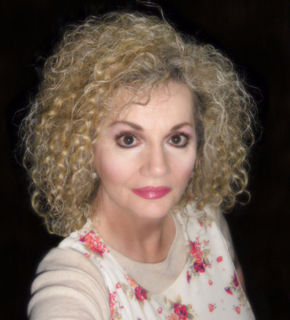BEREAVEMENT COLUMN
Internment to inurnment

By TRACY RENEE LEE
My brother is currently a student at a funeral school. He is studying to become a licensed funeral director and embalmer. We talked about his classes over Sunday dinner, and he mentioned something I had never heard.
Our family moved from Louisiana to the western United States when we were children. Our mother was a Cajun from south Louisiana, and our father was from north Louisiana. A short time after moving out west, our mother’s father was brutally murdered. Our mother immediately packed up her four children, boarded an airplane, and took us back to southern Louisiana for his funeral.
Our grandfather’s funeral was not the first we had ever attended, but it was the first Deep Southern, Catholic, Cajun funeral we had ever attended. It was so different from the funerals out west and north Louisiana. At the time of my grandfather’s funeral, my mother had changed her religion from Catholicism. Her religious change made Catholicism culturally foreign to me and my siblings.
The next day, funeral day, brought surprises as well. As my grandfather’s grandchildren, we were seated toward the front of the cathedral where his casket was staged. The Catholic Priests sprinkled his casket with holy water and carried incense burners as they walked around his casket several times. I remember the water sprinkling over on me, getting my new funeral dress spotty with droplets. I wondered if the raised markings of water stains would stay visible on my dress forever or if they would disappear from the cloth as my grandfather was now disappearing from my life.
As the priests walked by in succession, the one with the incense came by. Just when I thought the smoke from the night before was intense, the overpowering smoke from the incense burner invaded my air. I don’t know if it was the strength of the incense or that, as a young child, my body had taken all that it could bear, but right there, near the front row of the cathedral, I began to vomit. The nausea and trauma proved too much for me, and I was embarrassed that I became sick at my grandfather’s funeral.
The service ended, and my mother’s family walked my grandfather’s casket down the lane from the Catholic Cathedral to the cemetery. This was also a new experience for me. I had never seen an entire cathedral of people walk the casket to its final resting place. Because I had fallen ill, my paternal grandmother drove me in her car behind the walking congregation to the cemetery.
When we exited her car, I was astonished. The cemetery was filled with above-ground columbaria. I had never seen Columbaria before, and they were fascinating, like little churches for dead people. My grandfather was placed in his above-ground columbarium, and we drove to my mother’s childhood home to be with her family.
I will never forget the experience of my grandfather’s funeral. Not only was his death horrific, but his funeral was an uncomfortable cultural event in my young life.
As I talked with my brother after church yesterday, he mentioned that he was studying cemeteries of the Deep South; the type of cemeteries our grandfather had been buried in so long ago. He noted that the columbaria worked as very slow retorts and that over time, approximately 50 to 60 years, the decedent’s body would break down into cremains. In other words, the columbaria of South Louisiana slowly cremate the remains of those interred in them due to the high temperatures and extreme humidity.
I had never heard of this, so I decided to research it. It turns out that after one year and one day of being in a columbarium in the Deep South, the decedent’s body is moved from an upper shelf and placed on a lower shelf to complete the 50 to 60-year cremation process. Moving the decedent to a lower shelf allows room for newly departed loved ones within the same columbarium.
This is a unique post-mortem transition that I was unaware of. My funeral professors did not teach anything about this process when I was in college, and at such a tender and confusing event, I guess my mother did not see any need to expose it to me.
It is interesting that I can be a licensed professional in funeral practice and be completely unaware of the events that will take place to my grandfather’s body over time in the Deep South. As we have just recently passed the 50th anniversary of my grandfather’s death, and as I have just recently become aware of his slow columbarium cremation, I will contact the cemetery in South Louisiana to see if anything is to be done to inurn his cremains. I am happy that my brother discussed this with me before either of us passes away. Hopefully, before that time comes, we will be able to complete the internment to inurnment process for our grandfather. While we are at it, we will also make arrangements for our grandmother’s body.
My name is Tracy Renee Lee. I am a Certified Grief Counselor (GC-C), Funeral Director (FDIC), published author, syndicated columnist, Podcaster, and founder of the “Mikey Joe Children’s Memorial” and Heaven Sent, Corp. I write books, weekly bereavement articles, Podcasts, and Grief BRIEFs related to understanding and coping with grief. I am the American Funeral Director of the Year Runner-Up and recipient of the BBB’s Integrity Award.
For additional encouragement, please visit my podcast “Deadline” on Spotify and follow me on Instagram at “Deadline_TracyLee.”
